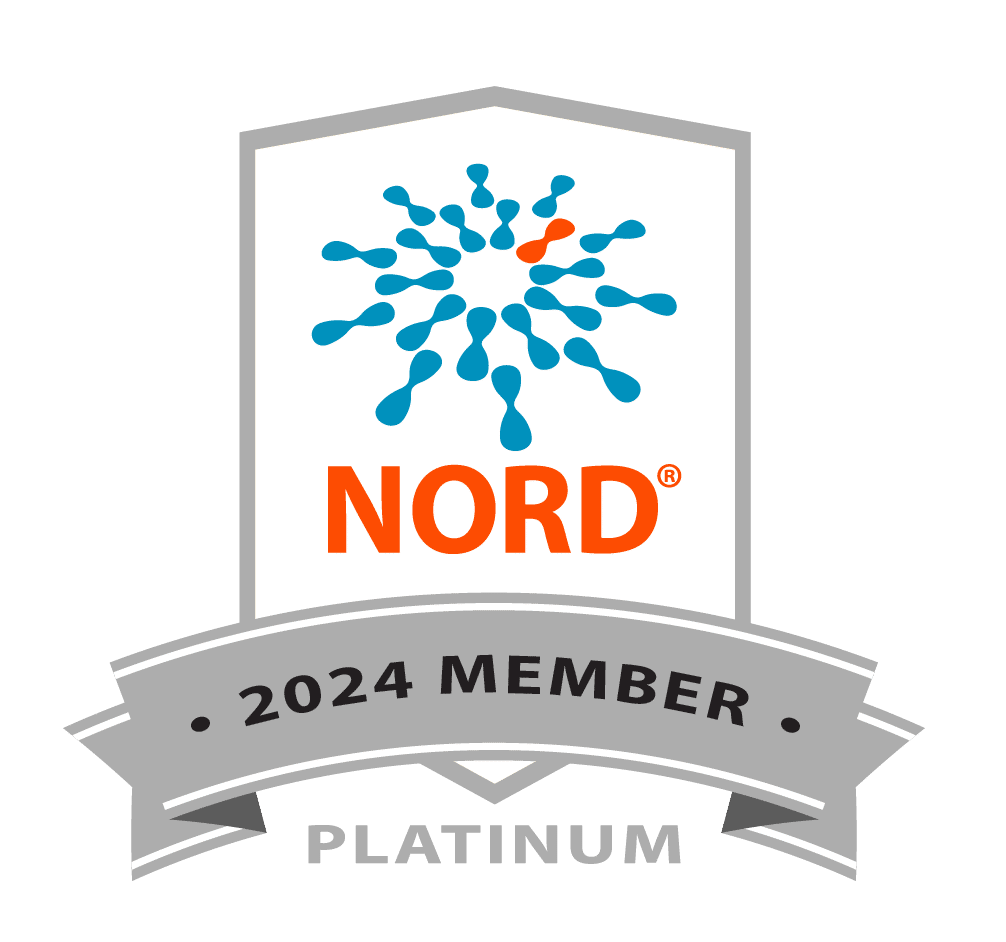2018 Research Updates
2018 has been a productive year for research on rare neuroimmune disorders. It is a long journey from the development of a hypothesis to when a new drug or therapy is available in the market. On average it takes about 15-25 years and for every 1 idea that succeeds, many more fail along the way.
The Pauline H. Siegel Eclipse Fund for research at SRNA drives critical research priorities including improving diagnosis, understanding causation, investigating novel therapies, and restoring function.
We share some of the research advances here with you.
Improving Diagnoses
Rare neuroimmune disorders are challenging to diagnose and can often take months depending on the expertise of the medical facility and the presentation of the symptoms. There have been a few publications and presentations this year sharing research to better diagnose rare neuroimmune disorders.
Some of this SRNA supported research was presented at the 70th American Academy of Neurology Annual Meeting, which was held from April 21-27 in Los Angeles, California.
Dr. Olwen Murphy, a current James T. Lubin Fellow, and a team at The Johns Hopkins Hospital presented research on pediatric myelopathies. They conducted a retrospective review of pediatric patients who were referred to the Johns Hopkins TM Center with a diagnosis of TM between 2010-2017. They reviewed the temporal profile of symptoms, clinical presentation, cerebrospinal fluid analysis and spinal cord magnetic resonance imaging of the patients to see if these characteristics were consistent with inflammatory myelopathies.
Maureen Mealy, also from the Johns Hopkins TM and NMO Centers and a member of SRNA Medical and Scientific Council, presented similar research that looked at 1000 patients who were referred to the Johns Hopkins TM Center between 2010 and 2017. They reviewed patients’ clinical/temporal profile, their neuroimaging, and laboratory findings to establish a final diagnosis. Differentiating between inflammatory and non-inflammatory causes of spinal cord damage can help improve diagnostic accuracy.
Dr. Murphy, Dr. Pardo, and Dr. Gailloud from Johns Hopkins University also presented research on a group of 100 patients with symptomatic low-flow spinal arteriovenous fistulas (SAVF). Low-flow SAVFs are the most common spinal vascular malformation and they can cause severe disability, including paraparesis, pain, bladder and sexual dysfunction. Most low-flow SAVFs can be treated, but they are frequently misdiagnosed, which can delay treatment. They identified clinical features that may help physicians identify this diagnosis.
Dr. Barerras and her colleagues from Johns Hopkins University TM Center published a study in which they analyzed the clinical presentation, spinal cord MRI findings, and cerebrospinal fluid (CSF) features of patients who were initially diagnosed with transverse myelitis. Their goal was to see how these characteristics may help differentiate inflammatory myelopathy from other causes of myelopathy.
Dr. Stacey L. Clardy at The University of Utah, one of the James T. Lubin Fellowship training sites, also presented research at AAN. Her team’s research focused on neuromyelitis optica spectrum disorder. This research aimed to determine the rate and characteristics of patients not meeting diagnostic criteria for neuromyelitis optica spectrum disorder who tested positive for autoantibodies to aquaporin 4 (AQP4). They found 48 patients in the University of Utah medical system who tested positive for AQP4, but only 20 of them met the clinical criteria for NMOSD. They argue that individuals should be tested for AQP4 multiple times to ensure patients do not receive false negative results.
Dr. Jonathan Galli, a James T. Lubin Fellow, worked with Dr. Clardy on another research study that aims to characterize patients with NMOSD in the Department of Defense (DoD) population. Their clinical characteristics matched other reports of individuals with NMOSD, except for the distribution between men and women, but this may be because of the characteristics of the DoD population as a whole.
We are hopeful that all this research and improved understanding will result in better, timely, and more accurate diagnosis which will improve the prognosis when someone is diagnosed with a rare neuroimmune disorder. For more on these publications click here.
Understanding causation
In the case of disorders like acute idiopathic transverse myelitis conventionally viewed as a sporadic disease, with no strong familial risk factors, there is no recognized genetic contribution to risk. Recent work at Johns Hopkins University has shown a mutation in a gene called VPS37A. The mutation was discovered in two sisters who were both diagnosed with TM at different points in their life. Dr. Michael Levy screened an additional 86 TM patients and found another patient with the same rare mutation. According to Dr. Levy, “It is statistically beyond coincidence to find three human beings with this same rare genetic mutation unless it has something to do with the rare disease they all share, TM.” Dr. Levy and his colleagues at Johns Hopkins University were awarded a research grant from SRNA to continue studying this genetic mutation in TM patients. The potential implications of this study are vast, as this is the first finding of a genetic cause of transverse myelitis. Although the study may yield only a small percentage of TM patients with the VPS37A genetic mutation, it can still help researchers learn about other cellular and immunological mechanisms that play a part in transverse myelitis. More information on this study can be found here.
Investigating novel therapies
For relapsing conditions like NMOSD and MOG Antibody Disease, finding novel therapies that reduce the risk of relapse is an important research strategy, as relapses can lead to vision loss, loss of mobility, and other symptoms. Dr. Olwen Murphy and colleagues published an article detailing the new therapies being investigated, how their efficacy is being studied, and the results of the trials.
Restoring function
Once damage had been done to the brain, spinal cord, or optic nerve, it is important to try to find therapies that can reverse all or part of this damage and help restore function. SRNA is incredibly excited to be working with UT Southwestern Medical Center and Q Therapeutics to study the safety and efficacy of implanting cells that produce myelin into the spinal cord. It is the first study of its kind in transverse myelitis. For more information on the study click here.
SRNA James T. Lubin Fellows
In addition to some of the research described above, we remain committed to funding Fellowships to train clinician-scientists in rare neuroimmune disorders. In 2018, SRNA supported four Fellows and their research projects.
Dr. Cynthia Wang, University of Texas Southwestern
Dr. Wang’s research study is a prospective, longitudinal study on acute disseminated encephalomyelitis (ADEM) to identify the clinical characteristics, treatment methods, and follow-up interventions that are associated with better and worse patient-centered outcomes.
Dr. Olwen Murphy, Johns Hopkins University
Dr. Murphy’s research is on predicting outcomes after a diagnosis of a transverse myelitis using current imaging techniques and spinal fluid analysis. The goal of the research project is to identify patterns or biomarkers that can be used in day-to-day clinical practice to identify benefits from therapies and help make better decisions about care.
Dr. Kyle Blackburn, University of Texas Southwestern
During his fellowship, Dr. Blackburn plans to launch a study that will collect patient reported outcome measures on adult and pediatric patients with transverse myelitis. The study aims to assess current outcomes in transverse myelitis, and to inform the development of outcome measures for future clinical trials.
Dr. Jonathan Galli, University of Utah
As part of his fellowship training, Dr. Blackburn plans to conduct research to look for biomarkers in individuals with NMOSD. He intends to see whether individuals have aquaporin4 (AQP4) autoantibodies prior to their symptom onset of NMOSD, and also look for other inflammatory biomarkers. He hopes the study will help us understand how biomarkers occur over the course of the disorder, which will hopefully help identify predictors of disease development, and ultimately therapeutic targets.
SRNA-Led Research
SRNA also launched a study about experiences with vaccinations after a rare neuroimmune disorder diagnosis. The goal of the study is to understand and learn from SRNA member community about their experiences with receiving vaccinations before and after a rare neuroimmune disorder diagnosis, with a focus on their experiences after diagnosis. This study is being conducted in two parts. The first part is a random sample of 600 members of SRNA. Once the random sample has been recruited and participation completed, we will open enrollment to all members of SRNA.
SRNA also continues to collect data for our patient Registry. The purpose of this registry is to help advance research about rare neuroimmune disorders, collaborate with researchers from around the world and identify participants for clinical trials.



